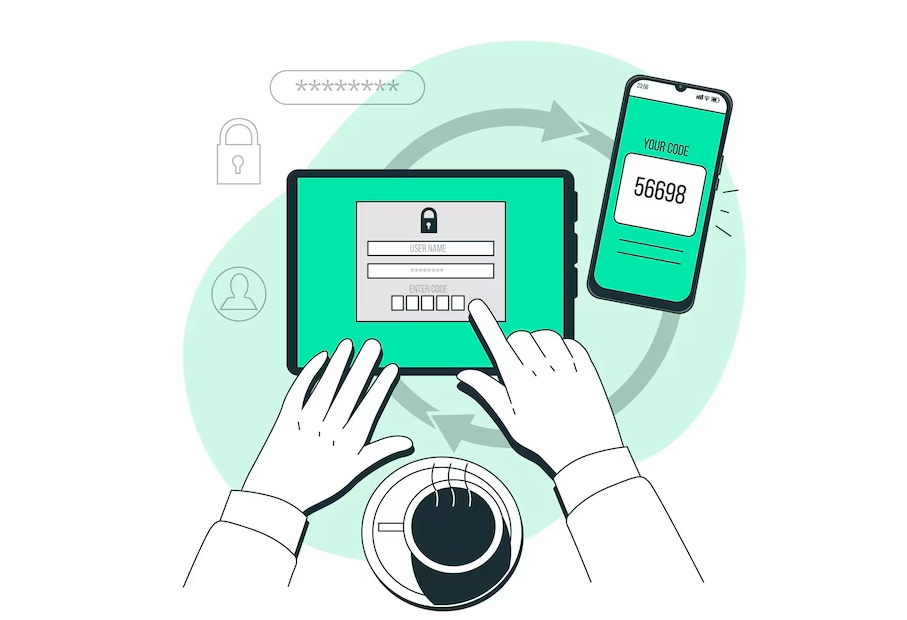In the fast-paced digital world, security is of paramount importance. With the increasing number of data breaches and cyber threats, individuals and businesses are seeking more robust methods of protecting their online accounts and sensitive information. One such method gaining popularity is two-factor authentication (2FA). In this article, we will explore the concept of two-factor authentication in the context of the bulk SMS industry, its benefits, and various implementation methods.

What is Two-Factor Authentication?
Two-factor authentication, also known as 2FA, is a security measure that adds an extra layer of protection to the login process. It requires users to provide two different types of information to verify their identity. This additional step makes it significantly harder for hackers to gain unauthorized access to accounts, even if they manage to obtain a user’s password.
The Importance of Two-Factor Authentication
Passwords alone have proven to be insufficient in ensuring the security of online accounts. Data breaches and password leaks have exposed millions of accounts, leading to unauthorized access and potential identity theft. Two factor authentication addresses these vulnerabilities by introducing an additional factor that is unique to the user, making it significantly more challenging for unauthorized individuals to gain access.
Benefits of Two-Factor Authentication
Implementing two factor authentication in the bulk SMS industry offers several benefits, including:
-
Enhanced Security: Two factor authentication provides an additional layer of security, reducing the risk of unauthorized access to sensitive information.
-
Mitigation of Password Vulnerabilities: Even if passwords are compromised, the second authentication factor acts as a safeguard, preventing unauthorized access.
-
Protection against Data Breaches: Two factor authentication helps mitigate the impact of data breaches by adding an extra layer of defense against unauthorized account access.
-
User Trust and Confidence: By implementing robust security measures, businesses can instill trust and confidence in their users, enhancing their reputation.
-
Compliance with Security Standards: Many industries, including the bulk SMS industry, are subject to regulatory requirements for securing sensitive information. Two factor authentication helps meet these standards.
Implementation Methods of Two-Factor Authentication
There are various methods to implement two factor authentication in the bulk SMS industry. Let’s explore some of the most commonly used approaches:
1. SMS-Based Two-Factor Authentication
SMS-based two factor authentication is one of the simplest and widely adopted methods. After entering their username and password, users receive a one-time verification code via SMS to their registered mobile number. They must then enter this code to complete the authentication process. While this method provides an additional layer of security, it is important to note that SMS messages are not entirely immune to interception or SIM card-swapping attacks.
2. Mobile Authenticator Apps
Mobile authenticator apps, such as Google Authenticator or Authy, provide a more secure alternative to SMS-based authentication. Users install these apps on their smartphones and link them to their accounts. When logging in, users open the app to generate a unique verification code, which they enter to complete the authentication process. These apps work offline, making them less susceptible to network vulnerabilities.
3. Hardware Tokens
Hardware tokens, such as USB security keys or smartcards, are physical devices that users carry with them. These tokens generate unique verification codes that users must enter during the login process. Hardware tokens offer a higher level of security, as they are not susceptible to phishing attacks or SIM card swapping. However, they require additional investment and management compared to other authentication methods.
4. Biometric Authentication
Biometric authentication utilizes unique physical characteristics, such as fingerprints or facial recognition, to verify a user’s identity. Many modern smartphones have built-in biometric sensors that can be used for authentication. The bulk SMS industry can leverage biometric authentication to provide a seamless and secure user experience.
Best Practices for Implementing Two-Factor Authentication in the Bulk SMS Industry
When implementing two factor authentication in the bulk SMS industry, it is essential to follow best practices to maximize security and user experience. Here are some key considerations:
-
User Education: Provide clear instructions on how to enable and use two-factor authentication to ensure users understand its benefits and how to navigate the process.
-
Multiple Authentication Options: Offer users a range of authentication methods, allowing them to choose the one that best suits their needs and preferences.
-
Regular Security Audits: Conduct regular security audits to identify vulnerabilities and address them promptly. Stay updated with the latest security practices and technologies.
-
Seamless Integration: Ensure the two-factor authentication process integrates seamlessly with existing systems and workflows to minimize disruption for users.
-
Backup and Recovery Options: Provide users with backup and recovery options in case they lose access to their primary authentication method, such as backup codes or alternative contact methods.
Also read: Why Invest in SMS Geofencing: The Future of Location-Based Marketing
Conclusion
Two-factor authentication is an essential security measure in the bulk SMS industry. By implementing two-factor authentication, businesses can enhance their security posture, protect user accounts and sensitive information, and build trust with their customers. Whether using SMS-based authentication, mobile authenticator apps, hardware tokens, or biometric authentication, the key is to choose a method that aligns with the organization’s security requirements and user preferences. Embracing two-factor authentication is a proactive approach to safeguarding against cyber threats and staying ahead in an increasingly interconnected world.
Remember, the security of your online accounts is in your hands. Enable two-factor authentication today and enjoy peace of mind knowing that your information is secure.
